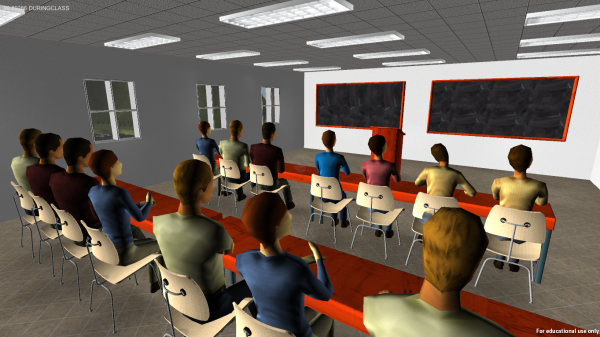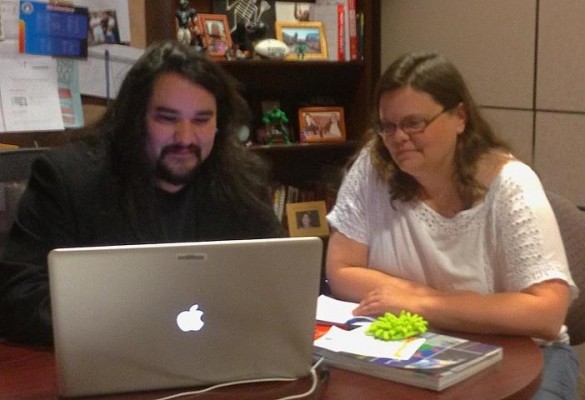Instructors who would use the Learning Simulation Game will see a variety of reactions from students and will have different options to engage them in the class. (Courtesy of Academic Technologies)
EL PASO — A technology professor at the University of Texas at El Paso is developing a game that teaches faculty how to manage the classroom and deal with disruptions when students talk out of turn, read email, arrive late, or just don’t pay attention.
“Its primary purpose is to offer ‘fun’ professional development for faculty,” said Steven Verela, 41, associate director of Academic Technologies, who has worked for two months on the game.
Although the game, called the Learning Simulation Game on Classroom Management, is still in development, eventually it can be used as a tool to teach faculty across disciplines how to better manage the classroom and engage students at a higher level.
“I’ve always been interested in gaming, primarily video games,” said Varela. “As a faculty member, I am always trying to improve my teaching and methodology as well — and I know that a lot of student success hinges on engagement.”
He said that “gamification,” the idea of taking the design attributes of gaming and applying them to non-gaming contexts, has been around a while but became a focus of his research over the past two years. “I knew combining this design with instructional methodologies would work well.”
The technology professor oversees an area in Academic Technologies called “Creative Studios,” and he and other members of his team, including Janet Hill and Robert McCain, handle programming, graphic design, and emerging technologies for the department. Hill is the virtual-world designer for the game and Robert McCain is the main programmer, but “my entire team of designers and programmers is also involved in different ways (as they all have different skills),” he said.
Steven Varela, associate director of Academic Technologies, and a team of designers and programers are working on the game and plan to launch it for testing on Fall 2014. (Courtesy of Academic technologies)
The Learning Simulation Game is aiming to launch in Fall of 2014. The design team plans to invite faculty to try out the game before it becomes available throughout campus. “Testing is an integral part of game design,” said Varela.
According to Varela, the goal of the Learning Simulation Game is “to keep the classroom engaged, so when the students are engaged they are pretty much writing notes, listening, asking questions and stuff like that.”
McCain said that when students are disengaged “they start to get disruptive; they’ll be basically answering phones.”
He explained when a teacher plays the game they place the cursor over a simulated student who may be engaged or disengaged in the classroom discussion. The game then gives the teacher a series of options on how best to respond to the student’s behavior.
The Learning Simulation Game for faculty has been two months in the development process.
Varela has also included game concepts in an Entering Students Class (UNIV 1301) he taught last fall and plans to teach again this fall. He said the gaming concepts “are integrated by using a narrative/storyline to unify the design, as well as engage the student. The class, like others, is designed cohesively with specific, significant learning outcomes that students could potentially transfer to any other class, discipline, or life-skill set.”
He added that “the key difference between a traditionally delivered class, and a ‘gamified’ one, is in the immersive experience itself.”
Education Major Samuel Luna who was enrolled in Varela’s entry level class said, “You learn how video games, or games in general, can make education more interesting by pretending it is a game. I think it can be applied pretty much anywhere really, not just education.”
Hill said Varela’s game centered course “basically teaching students what are the elements of games that can apply to real life situations, things like rewards, incentives and that kind of thing.”

